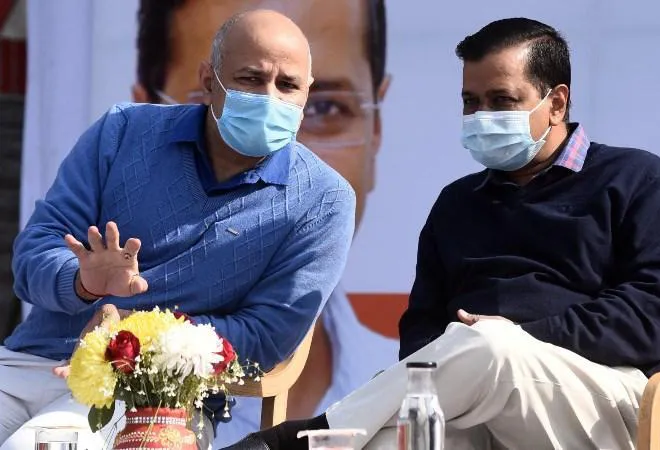The passage of the Government of National Capital Territory (GNCT) Bill sets the stage for a new cycle of confrontation between the Centre and the Delhi government. The new law circumscribes the already limited powers divested by the GNCT 1991 to the elected government. It does this by emphasising that “the expression ‘government’ referred to in any law to be made by the Legislative Assembly shall mean the Lieutenant Governor (L-G)”, drastically expanding the Centre’s powers.
To a layperson, Delhi looks like any other Indian state, given that it has an assembly and a chief minister. In reality, it is a Union Territory (UT), despite the 69th amendment transferring limited powers to an elected government in 1991. All successive central governments continued to retain control over land, police and public order, with power exercised via the L-G.
Taking a long view, it is important to recognise two things about Delhi. First, Delhi’s administrative arrangements have been unsatisfactory over the last 20 years. Second, changes resulting from the GNCT amendment are unlikely to improve governance and will make Delhi an outlier with respect to federal capitals.
Broadly speaking, there are three ways in which the governance of capital cities in federal countries have been organised. First, some capitals are organised as federal districts (Abuja, Brasilia, Canberra, Washington DC), with varying degrees of federal control over them. Second, some are organised as city-states (Berlin, Brussels, Buenos Aires), where the city government also carries out state functions. The third model is that of a city-in-a-state (Bern, Ottawa) where the capital is a municipality, under the state government. In the latter two models, there may be federal lands within the state or city boundary under federal jurisdiction, but the federal government has no hand in the governance of the broader metropolitan region.
As a UT, Delhi is best compared with other federal districts. Abuja, Canberra, Brasilia and Washington DC share certain features with Delhi. Each of these territories lacks full statehood. Abuja is the most centralised where Federal Capital Territory Administration (FCTA) is a federal ministry. This is followed by Washington DC, where the Congress retains the right to review and overturn laws created by the council. The Congress is presently debating a bill to provide DC with full statehood. In structure and form, Canberra and Brasilia are closest to Delhi, with popularly elected governments. While lacking full statehood, governments in both Brasilia and Canberra face no federal encumbrances in the day-to-day business of governance. Furthermore, both these capitals have significant powers over land and public security.
What distinguishes Delhi from other federal districts is sheer size. Its population would subsume the populations of the above-mentioned cities. Its closest peer is Mexico City. In a significant development, Mexico City was upgraded from federal district to the country’s 32nd state in 2016. This was driven by the desire to provide more responsive government for residents.
Among Capitals, Delhi’s governing structure is by far the most convoluted with a multiplicity of overlapping sub-national jurisdictions, including the Delhi government, New Delhi Municipal Council, Municipal Corporation of Delhi and Cantonment Board, each supervised by a different agency or government. Further, there are over 100 para-statal institutions involved in providing different services, often duplicating each other’s works in Delhi. An important step towards improving the management of metropolitan region would be to rationalise these bodies.
Decentralisation of decision-making is important. There are alternative ways in which both the central government as well as local authorities can partake jointly in the management of the city. This might be achieved by a two-tier metropolitan authority.
The first tier could be based on elected municipal councils for each of Delhi’s 11 revenue districts. These municipal authorities could provide local services (local roads, garbage, schools and public health, parks) and certainly be more responsive than existing local arrangements. The executive from these municipalities could then be brought together institutionally with the central representatives in a regional government with responsibility for land and infrastructure planning.
For comparison, Mexico City, in addition to an elected governor, now has elected mayors for its 16 boroughs, and the state legislature is composed of a mix of directly elected and local representatives. In Australia, the Sydney metropolitan area is divided into 31 local governments, with the state government playing a coordinating role.
Control over policing has been a major point of contention in Delhi. With the lone exception of Abuja, in other federal districts, the local governments have jurisdiction over at least some aspects of policing. Though the Australian Federal Police provide services for the Government of the Australian Capital Territory, it is done in agreement and under oversight with the Territory Government. It is the same in Washington DC.
For Delhi, one option could be to provide municipalities with enforcement powers exercised through community police officers to ensure civil compliance, whereas the Delhi Police deals with criminal issues. The second option might be to transfer the Delhi Police from the Union home ministry to the new (jointly managed) Regional Government, while, as is presently the case, central armed police forces continue maintain security at central assets.
Delhi’s governance needs a new re-imagination. Learning from international examples, and conceptualising a new structure, can be a way forward.
This commentary originally appeared in Hindustan Times.
The views expressed above belong to the author(s). ORF research and analyses now available on Telegram! Click here to access our curated content — blogs, longforms and interviews.




 PREV
PREV


